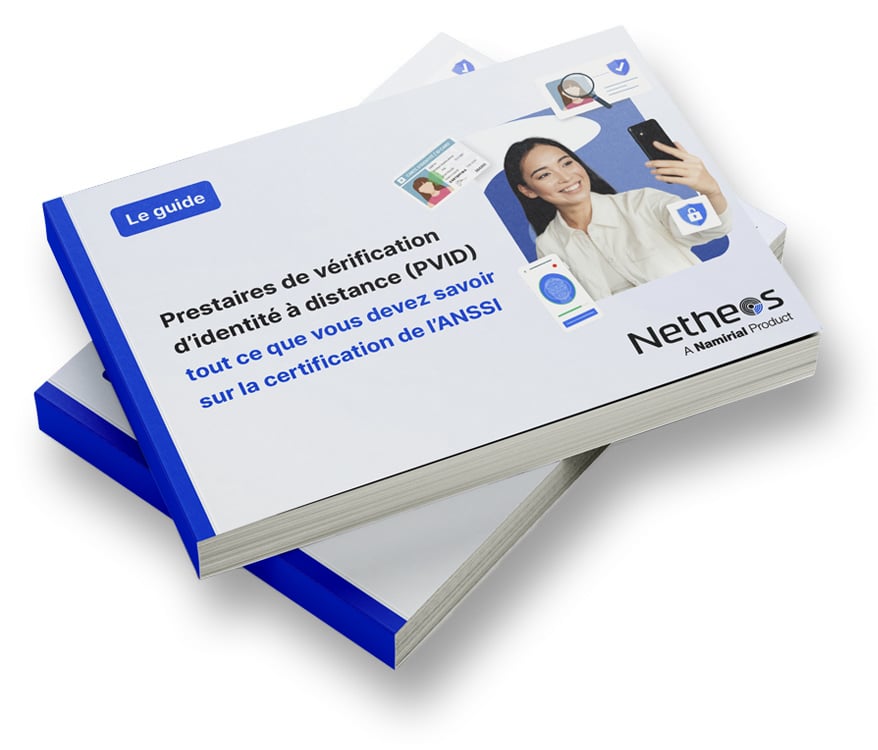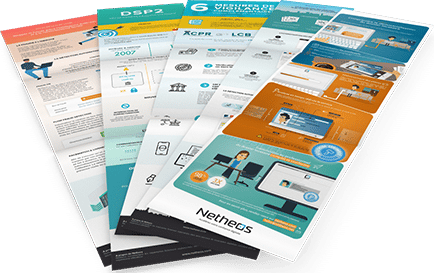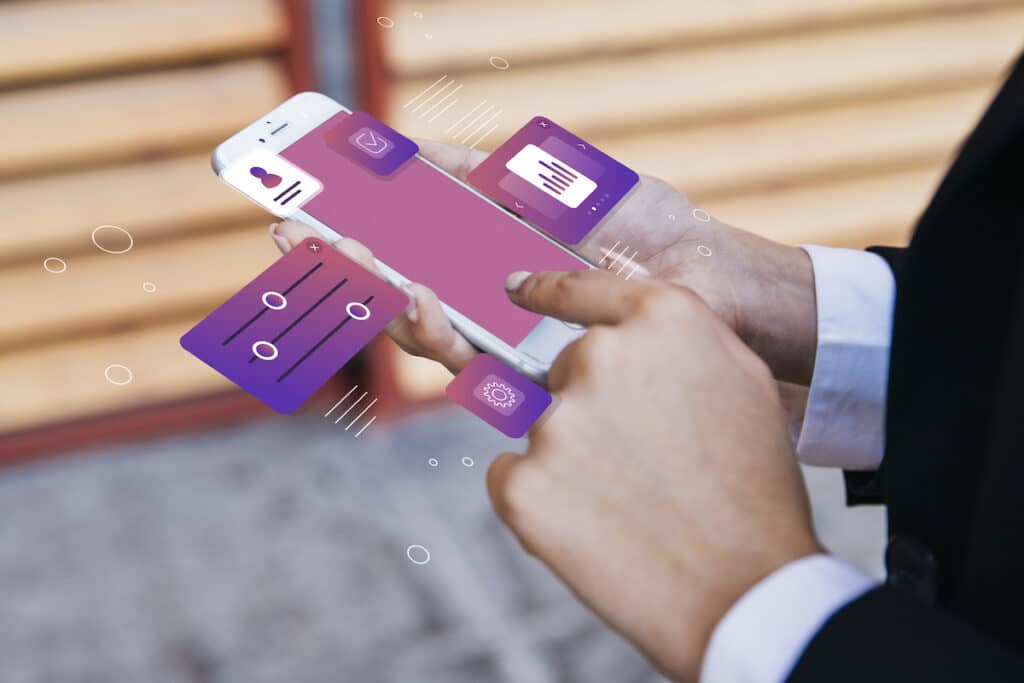In recent years, digital technology and especially the Internet have enabled millions of Internet users to subscribe directly to their financial products online. Opening a bank account, applying for a loan or signing an insurance contract: all the contracts that used to be concluded in a branch can now be signed online.
In this context, consumer demand for these online offers is accelerating and new ones are regularly appearing on the market. It is therefore necessary for the existing players not to be left behind by outsiders in an increasingly restrictive and competitive market.
Online sales of financial products, the new Eldorado
For the record, the main advantages of selling financial products online are:
- shortening of processing times (and therefore costs);
- better traceability, particularly with regard to compliance with regulatory obligations;
- Process automation, which limits human errors and improves the customer experience, a factor of loyalty;
- the possibility to easily cross-sell and up-sell on other products;
- a much more detailed knowledge of its customer, a major challenge in the years to come, which will see data analysis as a lever for improving performance.
To benefit from its advantages, it is still necessary to think carefully about its sales interface. Indeed, if the order process and the conversion tunnel are poorly thought out, especially if “paper” steps remain (forms, contracts or documents to be printed and sent back by post), the conversion rate, i.e. the ratio between the number of buyers and the number of visitors, can be very low.
In this case, investments in qualified traffic acquisition are inefficient and each lead is expensive to convert.
To increase your sales, Netheos, the specialist in online sales of financial products, exposes 5 mistakes that lower your conversion rate, and the solutions to implement to avoid them.
#1 – Few reassurance elements are present in the ordering process
Subscribing to a financial product is an important and difficult step for e-customers. It is therefore necessary to give them confidence through elements of reassurance.
The fact of not reassuring its future customer in an ordering process is a first mistake. This mechanically lowers the conversion rate and it will be difficult to make up for this lost lead.
Firstly, it is important to highlight the security of the ordering process (SSL certificate, secure connection, payment module offered by a reputable company). Even if these technologies are now known to the general public and adopted by the vast majority of players, it would be inappropriate not to point out that they are used.
Secondly, we advise not to hesitate to show that a reactive and human customer service is present to help the Internet user. This can be done for example through a visible telephone number indicating that a consultant is available to the prospect, an e-mail address or a live chat allowing to help the future customer in real time and in a personalized way as he progresses in the order process.
Thirdly, it can be interesting to show testimonials from satisfied customers via quotes or videos. This will mechanically reassure your future subscribers.
Finally, don’t hesitate to clearly explain the differences between your financial products through content and/or comparison charts. Transparency will win you customers!
#2 – A long customer path and a complicated interface
On the Internet, you can’t sell products like you did 5 years ago or more. Long, slow or complicated customer journeys will result in the loss of valuable customers for players who do not focus on ergonomics and ease of subscription.
One example is having to navigate through many different pages to finalize an order, especially if they repeat the same information several times (the “one page” ordering process is slowly becoming the norm). On the contrary, we must think of more ergonomic interfaces designed for the user, including for example the automatic input of certain text fields (for example: by typing the postal code, we directly access the corresponding city).
To improve the conversion rate, the ideal is to make the customer journey as simple as possible, without any obstacle or blocking element for the Internet user. In particular, we must stop asking clients to print out their documents, sign their paper contracts and, above all, force them to send them by post; these steps make the process of subscribing to a financial product far too complex.
Another solution is to ask for the supporting documents at the end of the customer journey, after the contract has been signed. At Netheos, we have found that this practice improves the conversion rate of our clients by 10%!
Finally, don’t hesitate to use your website’s analytics tools to measure and optimize your customer paths. For example, you may find that you are experiencing a high attrition rate during step 2 or 3 of your underwriting process, and thus run tests to improve this.
#3 – A non-integrated path that does not include electronic signature
More and more players are advocating 100% digital and paperless processes thanks to the democratization of electronic signatures and online submission of supporting documents. The fact that it is possible to subscribe completely via the Internet is an important factor in increasing the conversion rate of remote sales, which also offers many other advantages (automation, traceability, etc.).
Indeed, the obligation to go through paper to validate their subscription is experienced as an obstacle by many end customers. This wastes their time and makes them reluctant to continue with their purchasing process (printing, photocopying, trips to the post office, etc.).
The solution to increase its transformation rate is to integrate an electronic signature, as well as a space for the submission of supporting documents capable of accompanying the customer in real time.
For an electronic signature to be valid, it is mandatory to verify the identity of the signatory before the actual signature if he is a prospect. This can lead to a lower conversion rate due to the complexity of the process. Getting help from a specialized partner who knows the solutions to these problems can be a great help.
Finally, the signature solution must also comply with the European eIDAS regulation.
#4 – No marketing automation integrated into the underwriting process
Compared to a paper-based approach, digital technology makes it possible to track the customer and therefore to choose the right moment for an adapted follow-up. This is a significant advantage.
If the order tunnel does not include marketing automation adapted to the very specific process of online subscription to financial products, it will be difficult to “catch up” with certain prospects.
Automated reminders, for example, take into account information about the customer (age, socio-professional category, etc.), the path taken (entry channel, current status of the file, missing documents, etc.) and also the age of the reminder. This is done in order to send, by email or SMS, the messages with the best possible return rate.
It should also be noted that automation allows us to offer real-time support to the client, who can immediately correct any errors or omissions. The customer will not have to come back after several days, while his file is received and examined by the business backoffice, which can lead to disappointment and new customer losses.
#5 – No multi-channel
We can see that consumer behavior is constantly changing. A few years ago, customers used to subscribe to financial products through a single channel (e.g. store or telephone).
Today, the prospect does a search on the Internet (on mobile or computer), then goes to meet an advisor in store and makes his subscription on the web, while chatting with a member of the customer service to be sure not to be mistaken.
Not integrating these developments would be a mistake, especially if you have a variety of channels already available. It will therefore be necessary to give, for example, the possibility to complete a purchase started on the Internet, in a store or by phone with a fixed order number.
This is even more important in a context where a supporting document is quickly forgotten at home or unavailable at the time of subscription. The multi-channel approach allows for easy submission after the fact, thus removing obstacles and, above all, shortening deadlines.
Need help improving your conversion rate?
Netheos accelerates and automates the online sale of banking and insurance products. Our solutions increase the conversion rate of financial players and can be deployed quickly. Ask us for a demo!









